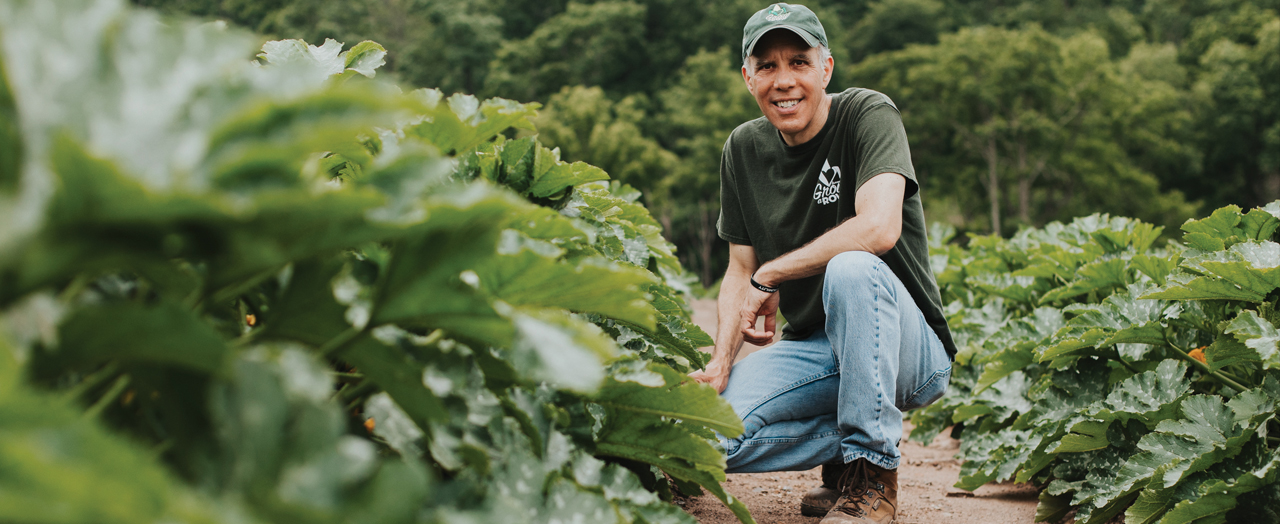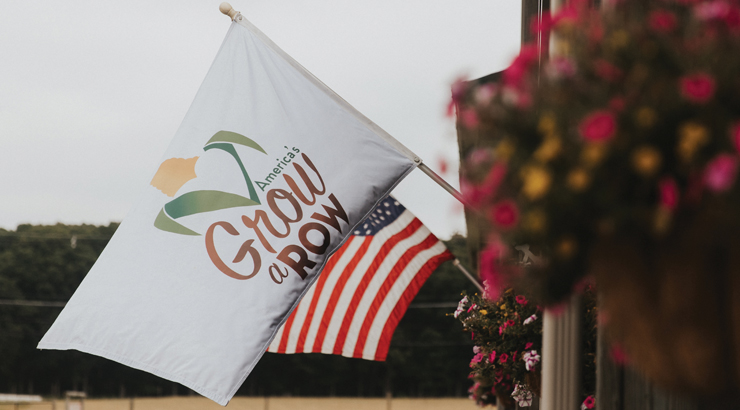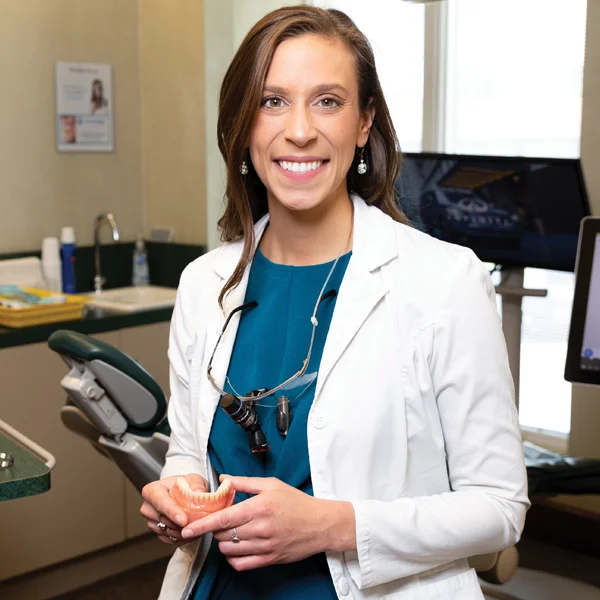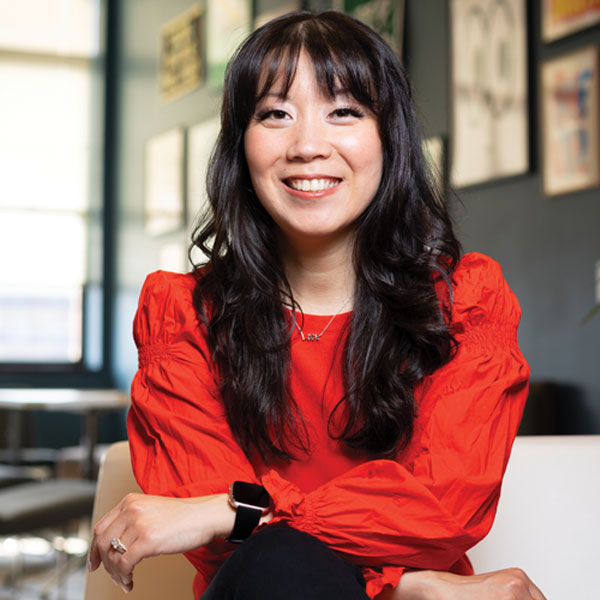
October 06, 2022
Everyday Hero: Alumnus Chip Paillex ’89 Fights Food Insecurity with America’s Grow-a-Row
BY VICKI MAYK PHOTOS BY CHRIS SPONAGLE

Chip Paillex ’89 always remembers a three-line notice in a weekly newspaper near his New Jersey home.
“It said, ‘If you ever have extra produce, grow a row for the hungry and bring it down to the food pantry,’” Paillex recalls. It was 2002 and he had started a 30-foot-by-30-foot garden as a project with his then 4-year-old daughter. Paillex soon dropped off a load of fresh
vegetables at the Flemington Area Food Pantry. What happened next changed his life.
“A woman ran out after me,” Paillex recalls. “Her face is etched in my mind. She was almost panicked. She said, ‘Sir, promise me you’ll come back again. I’m on a special diet for health reasons and I need fresh fruits and vegetables and they don’t have them here at the food
pantry. Will you please promise to come back again?’ I said ‘yes’ and that’s really what kicked it off.”
As president and founder of America’s Grow-a-Row, Paillex has more than made good on his promise. The Pittstown, N.J.-based organization, now in its 20th year, has grown from a small garden project to a nonprofit farming program that annually puts 2.5 million pounds of fresh fruits and vegetables into the hands of people without access to healthy food. Funding comes from corporations, individual donors and foundations. Since its founding, the organization has donated more than 15 million pounds of produce.
“This isn’t just about getting food to people,” Paillex says of Grow-a-Row’s mission. “It’s about getting healthy food to people. It’s a big deal.”
Produce is grown on four farms totaling more than 420 acres owned by America’s Grow-a-Row, as well as on partner farms. Additional food comes from ‘gleaning,’ or gathering food that might otherwise go to waste from supermarkets, orchards or other farms. The produce is distributed primarily in New Jersey, eastern Pennsylvania and New York City to food pantries, food banks, soup kitchens, Free Farm Markets where the produce is available at no cost to patrons, and more. One of the outlets, the Mid-Atlantic Regional Cooperative, sends produce to 23 food banks in 11 states throughout the northeast. Distributing free fresh fruits and vegetables answers a critical need for people who live in places considered food deserts – low-income areas with low access to healthy, affordable foods.
In the organization’s 2021 annual report, Gabriel Wang-Herrera from the America’s Grow-a-Row-Frankford Free Farm Market, says, “Our community is beyond appreciative of all the fresh produce that has been delivered to our area, which is considered both a food swamp and food desert. Not only does the food provide healthier choices for our people but it helps them redirect their discretionary funds to other necessities of life as well.”
Educational programming also is part of Grow-a-Row’s mission. Programs such as Grow-a-Row Kids Farm Days and workshops for schools, scout troops and other youth organizations, teach children about food insecurity, nutrition, agriculture and culinary skills. During the pandemic, virtual programs replaced some in-person events.

GROWING A NONPROFIT
Paillex studied business at Kutztown University, and the lessons learned as a marketing major have contributed to his success. Drawing on what he learned about the “Four Ps of marketing”
as an undergraduate, he talks about the four Ps of building his nonprofit: his passion for gardening, his purpose – helping those faced with food insecurity – backed by a plan to accomplish his goals and the right people to help him achieve them. Applying that idea has allowed a man with no agricultural experience to head an organization centered on farming.
“I’m very fortunate that I have very talented people on four corners of the organization,” Paillex says.
His work has earned him national and regional recognition. In 2014, he was named a CNN Hero and a Ford Go Further Everyday Hero. He also was a Farm Credit 100 Fresh Perspectives honoree and was recognized as a New Jersey Hero in 2011 at the inaugural swearing-in ceremony for former New Jersey Governor Chris Christie.
Paillex was never in it for the honors: It’s clear that feeding the food insecure is his passion. Clad in a T-shirt and baseball cap in his office on a spring morning, it’s hard to imagine him in the corporate world where he had a successful 17-year career in sales and trade marketing with Unilever Foods. A job relocation brought him to Hunterdon County, N.J., in 2001, the year before he planted his first garden and began donating food. By the time Unilever closed its office there in 2008, Paillex had enlisted volunteers and increased annual food donations to 600,000 pounds. He remembers that he and his wife, Susan, prayed for guidance. He decided that he would leave Unilever.
“God had a calling for me to do this, so I walked away from the corporate world,” Paillex says.
He established America’s Grow-a-Row as a 501(c)(3) nonprofit organization that year but was years away from being able to call it his job. He began working for PNC Bank in its mortgage division.
“I was working 40 hours a week for the bank and 30 to 40 hours a week for Grow-a-Row, just trying to build it up,” Paillex says.
In 2011, he remembers wondering how long he could maintain the grueling hours. Then he learned that the bank was closing his division. With his characteristic positive outlook, Paillex called it “an answer to a prayer.”
If that was true, what happened next might be called an appearance by a guardian angel. An anonymous philanthropist who had long been interested in America’s Grow-a-Row’s work offered to fund the fledgling nonprofit for the next three years. The donation allowed Paillex to work full time for his organization and to hire staff.
“The transition year was 2012,” Paillex recalls. “That allowed us to get a really good, solid foundation for the program. And from there, things just continued to grow.”
Creating Buzz
Now he directs a 27-person team that includes people who oversee the farming, direct fundraising efforts and coordinate volunteers. There’s also an executive chef who demonstrates cooking healthy meals. Paillex emphasizes that staff growth has not changed the integral role that volunteers play. An average 9,000 volunteers a year provide needed manpower for harvesting the crops and other activities. Volunteers come from corporate and community groups. People who benefit from the Free Farm Markets also volunteer to harvest, spending a day in the outdoors.
Marie Knapp of Milford, N.J., is a seven-year volunteer. Her assignments have included visiting grocery store partners to pick up near-expiration produce for distribution at food banks as well as staffing after-school programs and Free Farm Markets in Newark, East Orange and Jersey City, N.J. She’s enthusiastic about the friends she’s made in those communities who have helped her understand what it means to be without access to fresh foods.
“They’re lovely people with lovely families who don’t have access to a grocery store,” she says.
Corporate teams from companies like Johnson & Johnson have worked in Grow-a-Row’s fields from the beginning, also providing corporate sponsorships. KU alumnus John Knoble ’88, director of strategic skills for Johnson & Johnson’s MedTech, met Paillex when his team volunteered. The men learned about their shared connection as Kutztown business majors. Paillex also discovered that Knoble’s hobby is beekeeping – an interest that would allow him to provide unique volunteer help. The farm needed to reintroduce bees to pollinate its orchards. Knoble enlisted his neighbors, two veteran beekeepers who have 20 hives. With their help, between 800,000 and one million bees were reintroduced to Grow-a-Row’s orchards in 2021.
“We actually gained an incremental 75,000 pounds of apples last year alone, just because of bringing in the bees again to the orchard,” Paillex says.
Knoble says watching Paillex in action inspires involvement from volunteers.
“He’s such a nice guy, and so good-hearted, yet it’s balanced so well with a drive to accomplish things and with his business know-how,” Knoble says. “He’s got that big corporate background that has allowed him to accomplish things on the scale that he has.”

DIGGING DEEP DURING THE PANDEMIC
Paillex’s business acumen was tested during the COVID-19 pandemic. America’s Grow-a-Row
was on track to achieve its goals for growth in 2020 when the pandemic interrupted its volunteer programs, which provide integral help to plant crops and later harvest them. Director of Farm Management Operations Jeremy Compton played a key role in helping the organization pivot from a completely volunteer-based farming program to one combining commercial farming methods for planting with volunteer help for harvesting. A special fundraising appeal closed a funding gap.
Chip is a boots-on-the-ground leader. He inspires our staff with his enthusiasm, leads by example, and has drawn together a very collaborative and productive team … With the help of our volunteers and donors, together we make a positive impact on the communities we serve.
Heather Mulvey, director of development and communications, America's Grow-a-RowThe changes allowed Grow-a-Row to hit its goal of distributing 2 million pounds of food in 2020 and 2.4 million in 2021. The organization’s ability to maintain its volume was crucial as the demand at food banks and food pantries increased by more than 50% during the pandemic.
“Our greatest days were the last two years,” Paillex says. “I’m very proud of the team and humbled to work with such an incredible group of people.”
The growth of the organization means administrative tasks and fundraising take significant amounts of Paillex’s time, but he still makes sure to “get messy with everyone else,” working in the fields and distributing food at Free Farm Markets. Sometimes he’s joined by his daughter, Kyra, now a teacher. It’s central to his leadership style, says Heather Mulvey, director of development and communications.
“Chip is a boots-on-the-ground leader,” Mulvey says. “He inspires our staff with his enthusiasm, leads by example, and has drawn together a very collaborative and productive team. As a result, the team instills confidence in our funders through our ability to consistently deliver and exceed our goals. With the help of our volunteers and donors, together we make a positive impact on the communities we serve.”
While statistics in the millions dramatically illustrate the organization’s growth, Paillex still remembers the woman who followed him out of the food pantry asking him to return. With that in mind, it’s easy to visualize what it looks like to serve 86,000 people each day.
“It’s 17 miles of (individual) people at our front door every single day, getting a healthy serving of produce,” he says.
Grow-a-Row: By the Numbers
Source: Grow-Glean-Give: Grow-a-Row 2021 Annual Report
- 2.5 million pounds of produce donated annually.
- 255 Free Farm Markets plus a network of food pantries, food banks and other agencies distributed Grow-a-Row fruits and vegetables.
- 420 acres of farmland owned by Grow-a-Row and used to grow produce to fight food insecurity.
- 2,440 children and adults participated in educational programs to learn about nutrition, preparing healthy meals and more.
- 17,150 volunteer hours donated to harvest and distribute produce and assist with other needs at Grow-a-Row.
- 85,700 people fed.
This article appeared in the 2022 Tower Magazine























